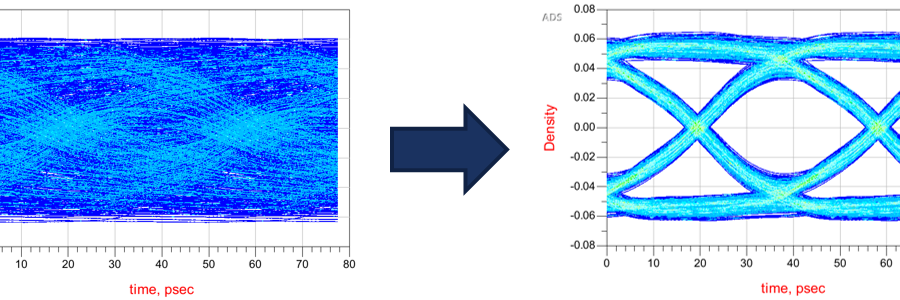Review and evaluation of TX and RX equalization techniques for high data rate transmission through copper channels. Simulation of equalization schemes for copper channels models to derive conclusions regarding equalizers properties and optimal equalization configuration.

In recent years, the growing demand for data traffic has driven serial links communication systems data rates to an exponential growth. 100 Gb/s links are already common in the industry and 200 and 400 Gb/s systems are being developed. A communication system consists of a transmitter (TX), a receiver (RX) and a channel between them. While TX and RX technology have greatly advanced over the past years, the advance in the channel technology has not been so rapid. Although active optical interconnects, allowing reliable high-speed data transmission over large distances are available, they are not used too widely, mainly because of their high cost and the induced power overhead. Therefore, most of the industry still use lossy copper interconnects (cables and backplanes) for high-speed data communication.
Copper interconnects tends to distort the transmitted signal, due to their limited bandwidth property, which attenuates high frequency components. This effect is widening the transmitted signal pulses, causing adjacent bits to interfere with each other. This phenomenon is called Intersymbol Interference (ISI). ISI introduces errors in the decision device at the receiver output and reduces transmission reliability.
In order to mitigate the signal distortion, TX and RX equalization techniques are being developed and constantly improved. The equalizers are aimed at partially restoring the transmitted signal, by producing an inverse frequency response to that of the channel, therefore flattening the overall response. TX equalizers consist of an FIR filter, which pre distort the signal before transmitting to achieve partial restoration in RX side. RX equalizers consist of FIR filters (FFE – Feed Forward Equalizer), analog linear filters (CTLE – Continuous Time Liner Equalizer) and non-linear feedback equalizers (DFE – Decision Feedback Equalizer). Common equalization schemes consist of one or more of these equalizers.
The project goal is to optimize equalization schemes for several channels, using simulation software. Simulations were executed with Keysight’s Advanced Design System (ADS) channel simulation. Simulation conditions were aimed to be similar to real high data rate communication systems, and consist of models of specified equalizers. Channels were simulated with s-parameters files, derived from actual cables. For each cable, different equalization schemes have been simulated, and conclusions derived regarding the optimal equalization scheme.



